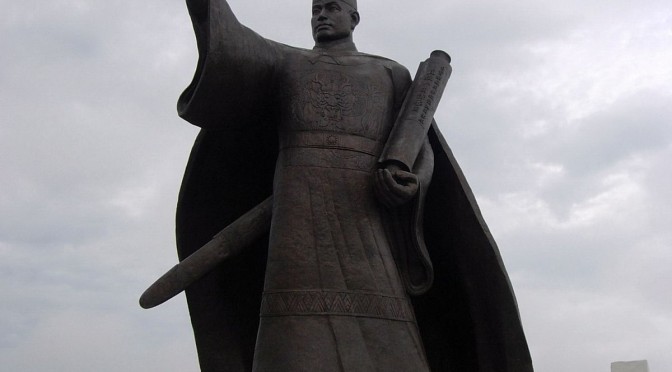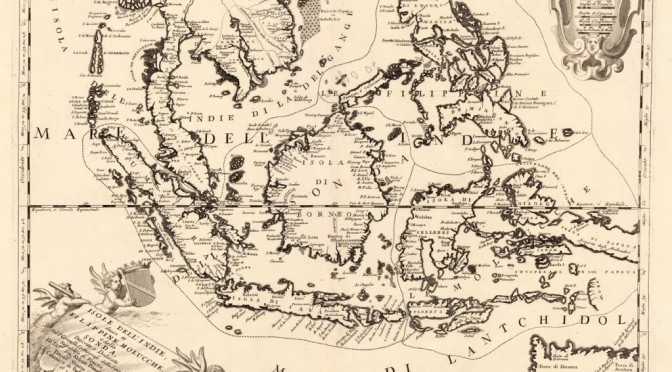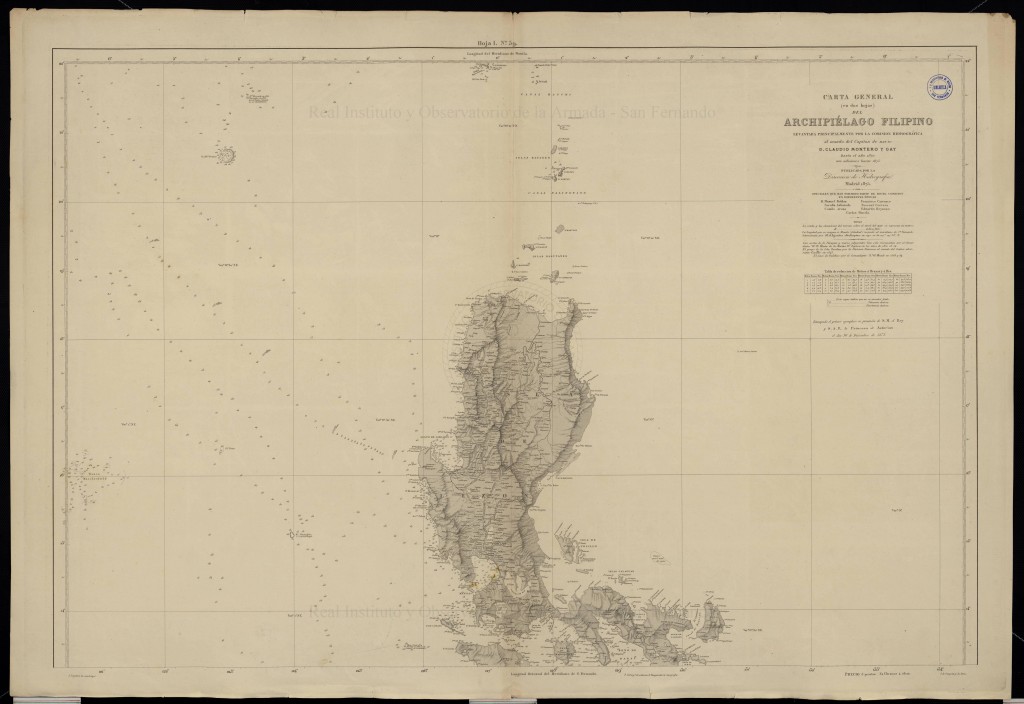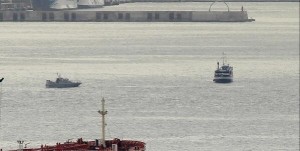By Alex Calvo
Introduction: the Philippines’ International Arbitration Case moves Forward
Despite Beijing’s refusal to take part in the proceedings, on 29 October the Court of Permanent Arbitration (PCA) issued a ruling on jurisdiction and admissibility of the UNCLOS arbitration case launched by the Philippines against China. The Court unanimously decided that it had jurisdiction concerning seven of the fifteen claims put forward by Manila, with a decision on a further seven to be reached when considering their merits. The ruling by the PAC is thus a major victory for Manila and maritime democracies, since China’s view that the Philippines had promised to pursue only negotiations, and her assertion that no decision could be taken on maritime zones until delimitation had taken place, were rejected. While the decision on the merits of the case will have to wait until at least next year, and a ruling in favor of Manila does not guarantee in and by itself that Beijing will comply, this is nevertheless a major step forward for the notion that it is right plus might and not just might in isolation, which will determine the future of this vital sea.
Some Highlights from the Court’s Decision
The following are some of the potentially most relevant aspects of the Court’s decision, with the page in brackets for ease of reference.
First of all, the PRC is squarely treated as the defendant, notwithstanding the fact she is refusing to take part in the proceedings. Thus “The Parties to this arbitration are the Republic of the Philippines (the “Philippines”) and the People’s Republic of China (“China”)” (p. vii). To justify this, the Court cites Art 9 of Annex VII to the Convention, saying that “the non-participation of China does not bar this Tribunal from proceeding with the arbitration. China is still a party to the arbitration, and pursuant to the terms of Article 296(1) of the Convention and Article 11 of Annex VII, it shall be bound by any award the Tribunal issues” (p. 11). While this does not necessarily imply an ultimate ruling in favor of Manila, as stressed by the Court (“The Tribunal does not simply adopt the Philippines’ claims, and there can be no default judgment as a result of China’s non-appearance”), it amounts to a major defeat for Beijing, which has seen her stress on bilateral negotiations and position that Manila had agreed to exclusively pursue such venue dismissed. Furthermore, it also means that the view that Manila’s case implied (even if just implicitly) territorial delimitation and thus fell squarely within the PRC’s derogation from compulsory arbitration in such matters has also been defeated. This makes it more difficult for China to proceed as in the recent past with a gradual yet relentless expansion, where reclamation and militarization went hand in hand with appeals to dialogue and negotiation and repeated promises of respect for freedom of navigation and overflight. Thus, either China tones down her actions and becomes more pragmatic and conciliatory, as some observers believe she may, or she chooses to nakedly ignore international rules and institutions, as Japan did following the Manchurian Incident and subsequent Lytton Report and Stimson Doctrine.
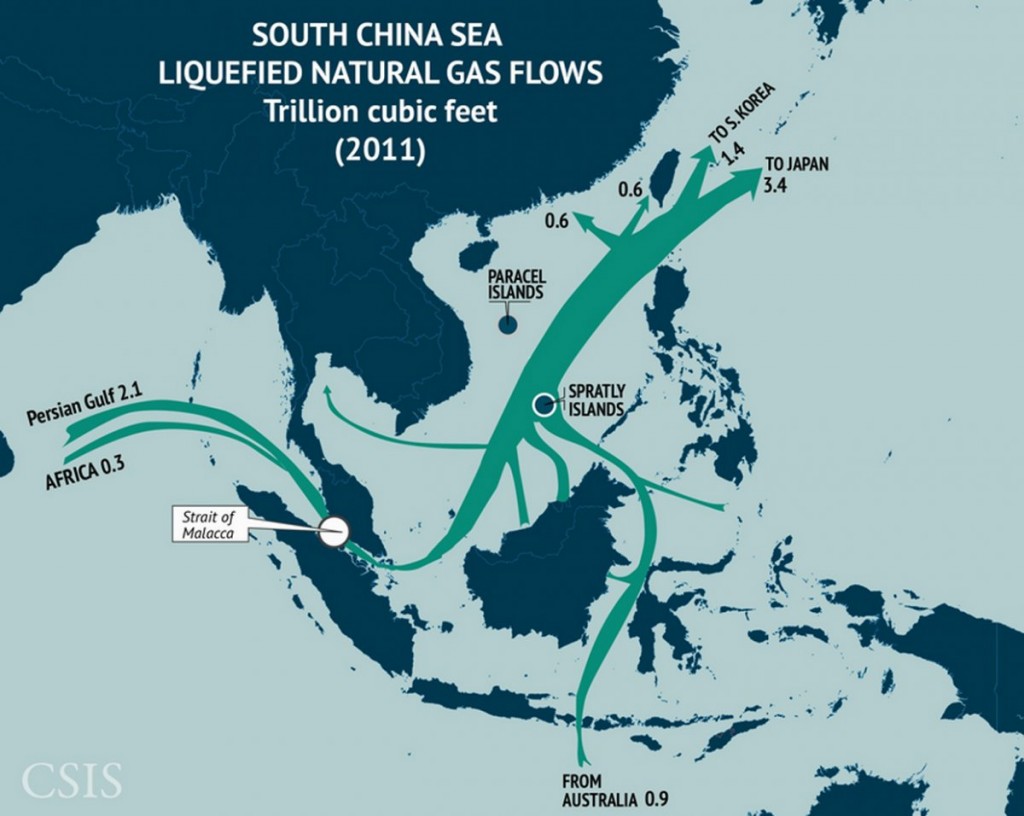
Concerning China’s non-participation, the PAC explicitly acknowledge the 7 December 2014 position paper, not only referring to it but stating that its publication “facilitated the Tribunal’s task to some extent”. Thus, for the benefit of justice and the concept of equality of arms between the parties, the Court has clearly taken a pragmatic approach towards China’s decision to approach the PAC indirectly, not making a submission but instead publishing a position paper laying down her views and her response to the Philippines’ demands. This was already clear, as explained in the decision, when this summer on holding hearings on jurisdiction the Court provided the PRC “with daily transcripts and all documents submitted during the course” of those hearings. In a way we could see perhaps all this as evidence of some sort of pragmatic arrangement, or gentlemen’s agreement, whereby Beijing did not formally take part in the proceedings but was still informed in detail and had the chance to make her views known to the Court. As the ruling notes, “The Position Paper has since been followed by two letters from the Chinese Ambassador addressed to the members of the Tribunal and by regular public statements of Chinese officials that touch on the arbitration” (p. 41). This could of course go on in the next stage, as the Court deliberates on the merits. Beijing may stay aloof from the proceedings, as she has announced she will, while still interacting with the Court on a semi-official basis. However, this just means delaying the moment when Beijing, should the final ruling go against her, will have to decide whether to comply or not with that decision. In that case, even if the PRC’s leadership chooses pragmatism and accommodation, the CCP may find itself a prisoner of its own rhetoric, and the many years during which it has been telling the Chinese population that the country had “indisputable sovereignty” over the whole of the South China Sea. Thus, accepting the ruling may be no easy matter for Beijing, even if the will is there.
Concerning Bejing’s claims that the case amounts to an abuse of right, the Court rejects it, saying that “China has not made an application to the Tribunal pursuant to Article 294(1) of the Convention”, which would force it to decide whether it was the case, and “the Tribunal is therefore under no obligation to follow the procedure outlined in Article 294(2)”. Furthermore, the ruling states that “the procedure is appropriate in only the most blatant cases of abuse or harassment”, which is not the situation in the current proceedings (p. 43). Therefore, the PAC chooses instead to focus on jurisdiction. China may have considered that submitting an application under Article 294 UNCLOS would definitely be considered to amount to taking part in the proceedings. An alternative explanation is that Beijing preferred not to risk losing an early battle by having the Court formally determine that the case did not constitute an abuse of right, choosing instead to simply use this term to criticize it in the political arena.
With regard to Beijing’s contention that it is impossible to rule on the exercise of maritime rights before first ruling on the underlying territorial dispute, the Court is adamant that this is not the case, stating instead that it “does not see that any of the Philippines’ Submissions require an implicit determination of sovereignty” (p. 59-60). This notion that it is possible to first determine the interpretation of UNCLOS and whether a party’s actions conform to it, while leaving territorial delimitation to later negotiations or (non-compulsory) arbitration could be compared to the idea (put into practice by Taiwan and Japan in their Senkaku Islands fisheries agreement) that it is possible to first jointly manage and exploit natural resources, while again leaving territorial delimitation for later. This is a reminder of how the Philippines’ arbitration case and Taiwan’s East China Sea initiative (and its child, the Senkaku fisheries agreement with Japan), taken together, may point the way forward to a peaceful, international law-based approach to maritime territorial disputes in the Indo-Pacific Region. An informal Manila-Taipei-Tokyo democratic triangle may emerge as the seed around which a wider informal coalition may emerge, although of course for this to be effective its reach cannot be limited to the diplomatic and legal arenas. One thing is to stress the rule of law at sea and peaceful resolution of disputes in accordance with international law, another to wishfully think that this can take place without the possibility of resorting to force if necessary. National security and collective security are the other side of the coin, without which international law and the rule of law at sea cannot thrive and ultimately prevail.
The Tribunal notes, in line with long-standing comments by observers and other states, that “China has not, as far as the Tribunal is aware, clarified the nature or scope of its claimed historic rights. Nor has China clarified its understanding of the meaning of the ‘nine-dash line’ set out on the
map accompanying its Notes Verbales of 7 May 2009” (p. 62). This was precisely the motivation behind the US State Department’s Limits in the Seas issue No 143 devoted to Chinese claims in the South China Sea. Thus, although this is a matter reserved for the decision on the merits of the case, we could read the PAC’s ruling on jurisdiction as saying that the nine-dash line must be translated into claims under UNCLOS, since the Convention does not recognize any such concept. This makes it clear that Beijing is facing an uphill battle in seeking to convince the court that the nine-dash line can indeed be made to fit into UNCLOS. However, there is always the possibility that in its final ruling the Court will not declare the line as such to be contrary to UNCLOS, as requested by the Philippines, but instead take a softer, more pragmatic approach, and say that while not illegal per se, its meaning must be clarified by resort to those concepts such as the territorial sea and the EEZ laid down in the Convention. While the impact of such a ruling would not be as spectacular, it may be a way of avoiding cornering Beijing, leaving room for later negotiations and compromise, instead of making Beijing lose face in no uncertain terms. Such a ruling would allow both sides to claim victory. We should remember, in this regard, that international tribunals must often walk a fine line between the wish to uphold international law, and the need to ensure its effective implementation. Thus, rather than a perfect ruling with close to zero chances of settling the matter, the PAC may prefer a less than perfect text that can be used as a stepping stone towards a final settlement of the dispute.
Also interesting is the fact that the Court considers that no intervention by a third party is necessary in the proceedings, thus reinforcing the view that territorial delimitation is not at stake. This again is in line with Manila’s position, while not following “the Chinese Ambassador’s First Letter”, where he “did express serious concern and opposition to a procedure of ‘intervention by other States’”, in reference to Vietnam, “as being ‘inconsistent with the general practices of international arbitration’” (p. 73). Hanoi’s role in the proceedings, not formally a party but having made her own statement and attended this summer’s proceedings, shows how, and this is one of the aspects of the case which clearly worries China, the arbitration proceedings, although strictly speaking bilateral, have attracted not only the support of a wide range of countries, but limited participation by some of them. Taken together, it could facilitate cooperation among these countries, and furthermore could support the notion that China is the odd man out, and not just another claimant, in the South China Sea.
Concerning China’s assertion that the Philippines had agreed not to pursue arbitration, by among others signing the 2002 DOC (Declaration on the Conduct of Parties in the South China Sea), the Court considers that its “language is not consistent with the creation of new obligations but rather restates existing obligations pending agreement on a Code that eventually would set out new obligations”, adding that it basically reaffirms existing obligations and exhorts parties to create others at some point in the future (p. 83). Thus, the Court concludes that “the DOC was not intended to be a legally binding agreement with respect to dispute resolution”, and uses contemporary documents to support the view that it was instead “an aspirational political document”. In doing so, the PAC stresses statements by China herself, such as that in August 2000 by a spokesperson for the Chinese Foreign Ministry, who said that the “Code of Conduct will be a political document to promote good neighbourliness and regional stability instead of a legal document to solve specific disputes” (p. 84). This is significant at many levels. On the one hand it illustrates a very important general principle of international law, that someone cannot go against his own acts. On the other, it exposes the shallowness of bilateral and multilateral diplomacy in the South China Sea in recent years, full of smoke and grand sounding statements but rather short on substance. Other claimants may be wary of openly calling Beijing’s bluff for fear of appearing disrespectful, but the Court minces no words in its ruling on jurisdiction, providing a detailed explanation of why the long list of statements, agreements, and contacts, do not amount to much at the end of the day, and clearly constitute no bar to the arbitration proceedings, since at no stage have the Philippines and Beijing agreed to forgo this road.
Finally, we should note that out of 15 submissions by the Philippines, the Court determined that it had jurisdiction to consider seven, and concerning another seven it reserved consideration of its jurisdiction to the merits phase. In one (15, concerning the request of a declaration that “China shall desist from further unlawful claims and activities”), the Court “DIRECTS the Philippines to clarify the content and narrow the scope of its Submission” and also reserves consideration of its jurisdiction to the merits phase. The ruling states that “the claims and activities to which this
Submission could potentially relate are unclear from the Philippines pleadings to date” (p. 147). Since, out of 15 submissions, not one has been determined at this stage to be ultra vires (beyond the powers of) the Court, it is difficult to overstate the degree to which this constitutes a major victory for the Philippines. Having said that, we should remember that this arbitration case, and more generally appeals to international law, the rule of law at sea, and peaceful resolution of disputes in accordance with international law, are only an aspect of Manila’s strategy to deal with Chinese expansionism. They should not be seen in isolation, but rather in conjunction with rearmament, and stronger bilateral and multilateral relations with fellow maritime democracies. Unless the Philippines can upgrade their military, regaining lost capacities such as combat jets, and being able to deal with the different levels of warfare (including non-lethal force at sea), a victory in the final stage of this legal battle may end up being little more than a footnote in history books.
Taiwan’s Reaction
MOFA spokesperson Eleanor Wang said that “The Republic of China government’s determination to defend the country’s sovereignty and maritime rights over the four island chains in the South China Sea is not open to question”, adding that her department was closely following developments in the arbitration case, and would respond as necessary. The Republic of China is not a party to UNCLOS, but Taipei has urged the different parties involved to respect international law, including this convention.
Taiwanese views on the issue are important for a number of reasons. First of all because the ROC is one of the claimants, and controls Itu Aba (Taiping) Island. Second, since PRC claims and in particular the famous “Nine-dash line” and its successors originated in the ROC, which the PRC claims to have legally superseded. Third, given that in spite of the previous point Taipei has been moving away from these maximalist positions, both in theory and practice. Fourth, because the Island launched an East China Sea Peace initiative, followed by a fisheries agreement with Japan concerning the Senkaku / Diaoyu / Diayutai, and both could be a template for the South China Sea. Finally, because one of the points that irritated Beijing, as clear from the Chinese 7 December 2014 position paper, was the Philippines’ alleged deviation from a “One China” policy in her arbitration suit against the PRC.
Taiwan may not be recognized by the UN and most countries in the world, and actually still has to decide whether to recognize herself, but the dispute over the South China Sea is intimately connected to that over the Island. After proving that democracy and Sinic culture are compatible, Taiwan is now showing how the latter can also coexist side by side with the rule of law and a pragmatic approach to territorial disputes.
Beijing insists the case is outside UNCLOS compulsory arbitration.
The PCA ruling prompted a strong reaction by Beijing, with the PRC’s Foreign Affairs Ministry insisting in refusing to recognize the court and take part in the proceedings. We should note, however, that as explained China has not stayed completely aloof from the case, since on 7 December 2014 she issued a position paper explaining her views and the reasons why she believed the case should be dismissed. In a statement dated 30 October, the MOFA said the ruling was “null and void, and has no binding effect on China”, and warned that the case would damage “the integrity and authority of the UNCLOS”. The text said that “With regard to territorial sovereignty and maritime rights and interests, China will not accept any solution imposed on it or any unilateral resort to a third-party dispute settlement”. It also slammed the case as a “political provocation under the cloak of law”, stressing that China’s position, explained in her position paper, was “clear and explicit, and will not change”. Beijing once again underlined that she considered the Declaration on the Conduct of Parties in the South China Sea (DOC) to mean Manila had agreed to exclusively resort to “negotiations and consultations”.
While none of this comes as a surprise, it is not clear yet whether the ruling will contribute to a change in Chinese policy. Beijing may wait for the ruling on the merits, while completing the construction of military and dual-use facilities in her artificial islands and avoiding major incidents, keeping a lower profile. She may, on the other hand, declare an ADIZ (Air Defense Identification Zone). Either way, China may seek some accommodation with other littoral states, in order to prevent ASEAN from coordinating effectively and to limit the potential damage to her reputation that could result from appearing too inflexible. In the longer run, China may seek to either shape rules and institutions like UNCLOS and the PAC, or devise an alternative more to her liking. The first option could imply building an informal coalition with countries also keen to expand the rights of coastal states in their EEZs. However, at least two obstacles loom large, namely the unclear nature of Chinese claims (which may go much further than that) and the fact that some potential allies also happen to be rival claimants. The recent FONOP (freedom of navigation operation) in the South China Sea by USS Lassen has been supported by a number of regional states, even those like Vietnam who are also targeted by Washington’s freedom of navigation program. The second, more radical, option, would involve setting up an alternative institutional framework, as Beijing is gradually doing in the international financial arena with the Asian Infrastructure Investment Bank (AIIB) and the possible development of a RMB payments system independent of Swift.
Conclusions
Manila has won a victory in the first stage of the legal battle aimed at arresting Beijing’s expansion in the South China Sea. Although, as stressed by the Court, this does not prejudge the final decision on the merits of the case, major pillars of the PRC’s narrative, such as the alleged agreement with other countries to pursue negotiations only, have been blown out of the water. Faced with this, China may choose to ignore a decision in favor of Manila, thus putting a further dent on her prestige as a country respectful of international law and other nations, or seek some sort of accommodation, saving face while making some concessions. Some voices believe that China may already be starting to act in a more conciliatory manner, in the wake of the ruling on jurisdiction. However, flexibility may not be compatible with a public opinion that has repeatedly been told the South China Sea was “indisputably” Chinese, and which may turn on any leader ready to make concessions. Concerning the Philippines, even if success at this stage is repeated when the Court rules on the merits of the case, she needs to keep working on rearmament and stronger bilateral and multilateral relations with fellow maritime democracies and Vietnam, since otherwise the Court’s final ruling may amount to little more than a symbolic victory. Taiwan, not a party to UNCLOS, is however a very important actor in this dispute, and her East China Sea Peace Initiative and subsequent fisheries agreement with Japan may be vindicated if an arbitration ruling is followed by a peaceful settlement of the South China Sea dispute, or at least an agreement to set aside territorial claims while jointly managing resources and moving forward with confidence-building measures.
Alex Calvo, a guest professor at Nagoya University (Japan), focuses on security and defence policy, international law, and military history, in the Indian-Pacific Ocean Region. A member of Taiwan’s South China Sea Think-Tank and CIMSEC (The Center for International Maritime Security), his previous work on the South China Sea includes “China, the Philippines, Vietnam, and International Arbitration in the South China Sea”, The Asia Pacific Journal: Japan Focus, Volume 13, Issue 42, No. 2, 26 October 2015, available at http://japanfocus.org/-Alex-Calvo/4391/article.pdf He tweets at Alex__Calvo and his work can be found at https://nagoya-u.academia.edu/AlexCalvo


